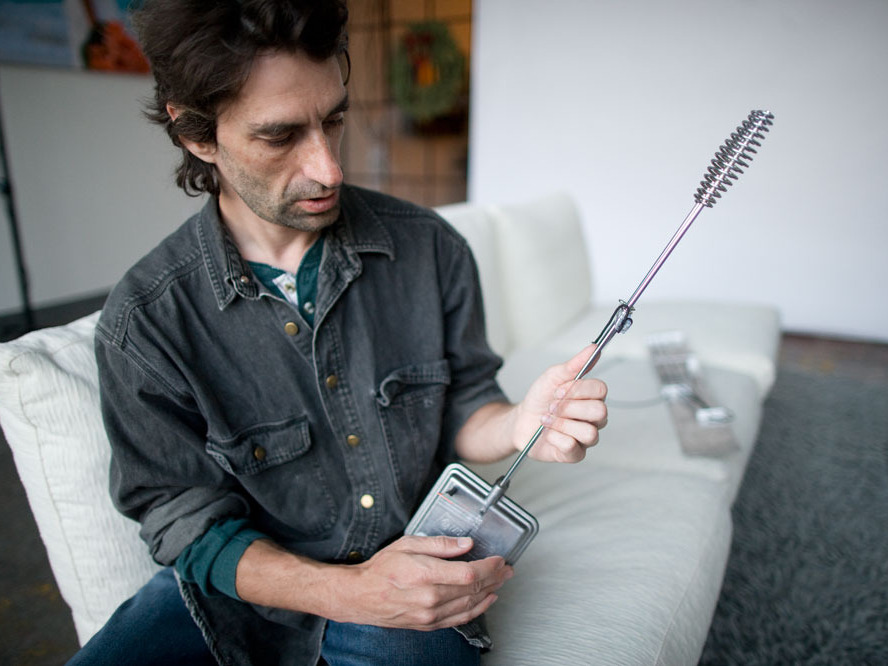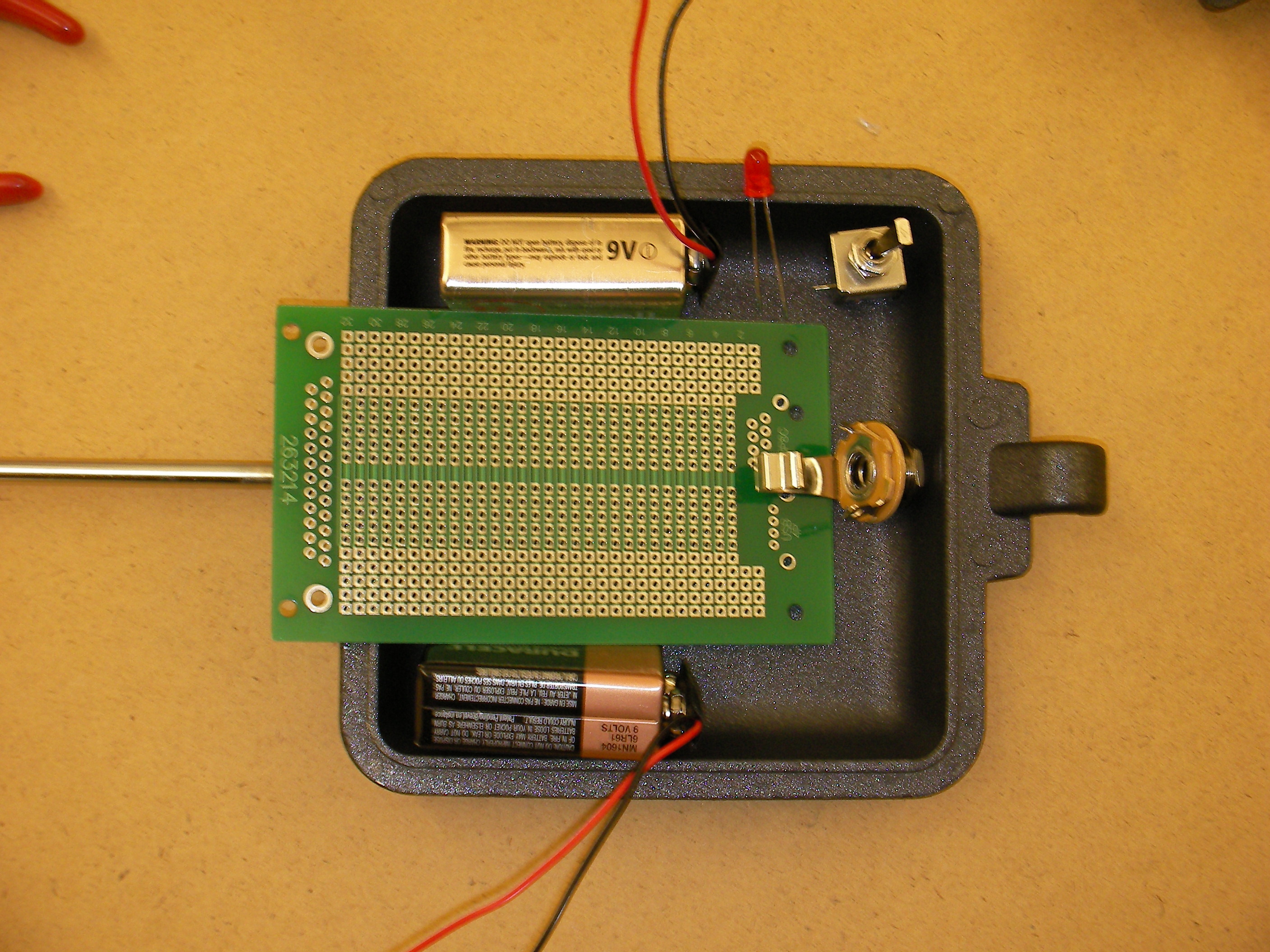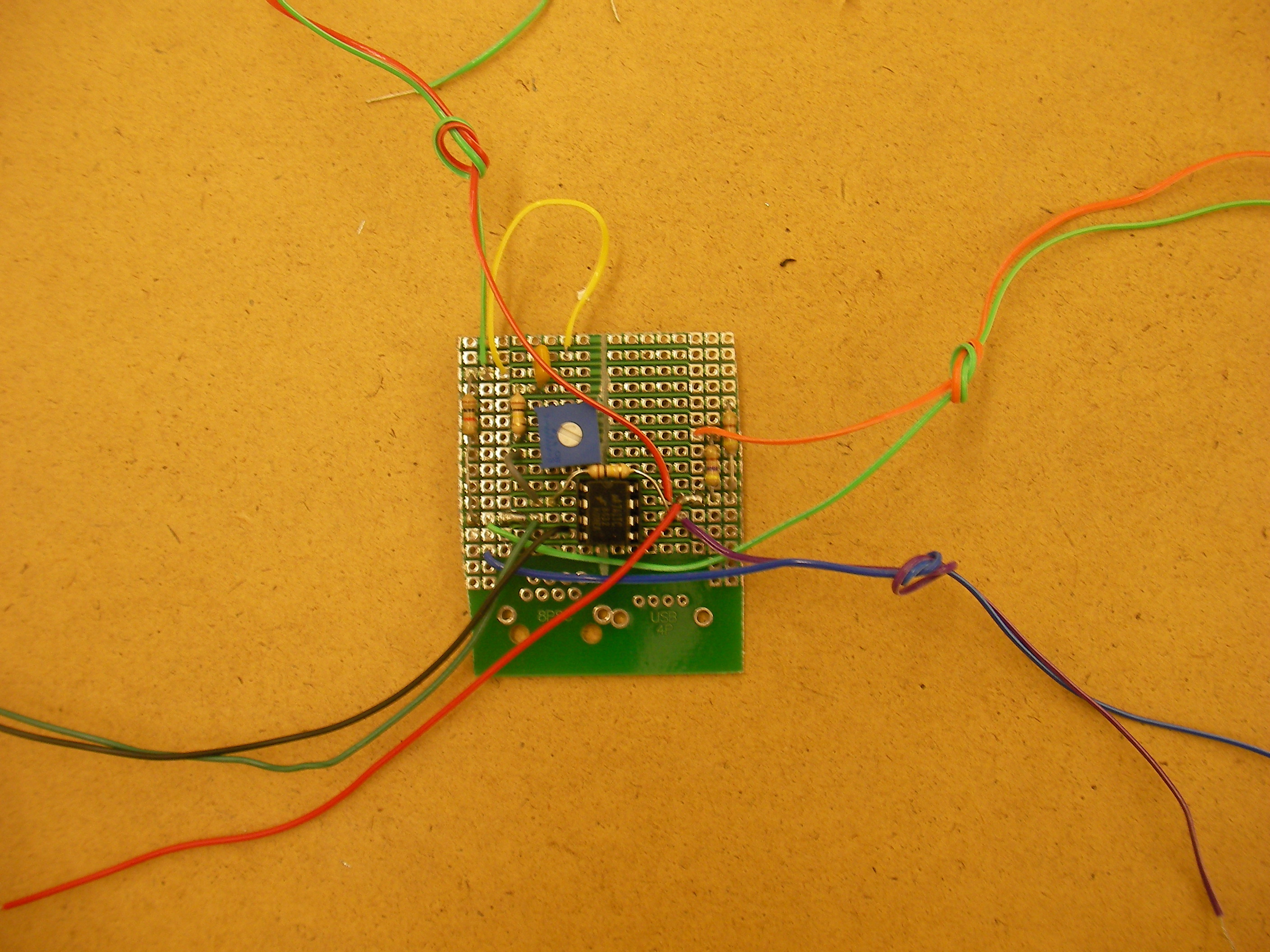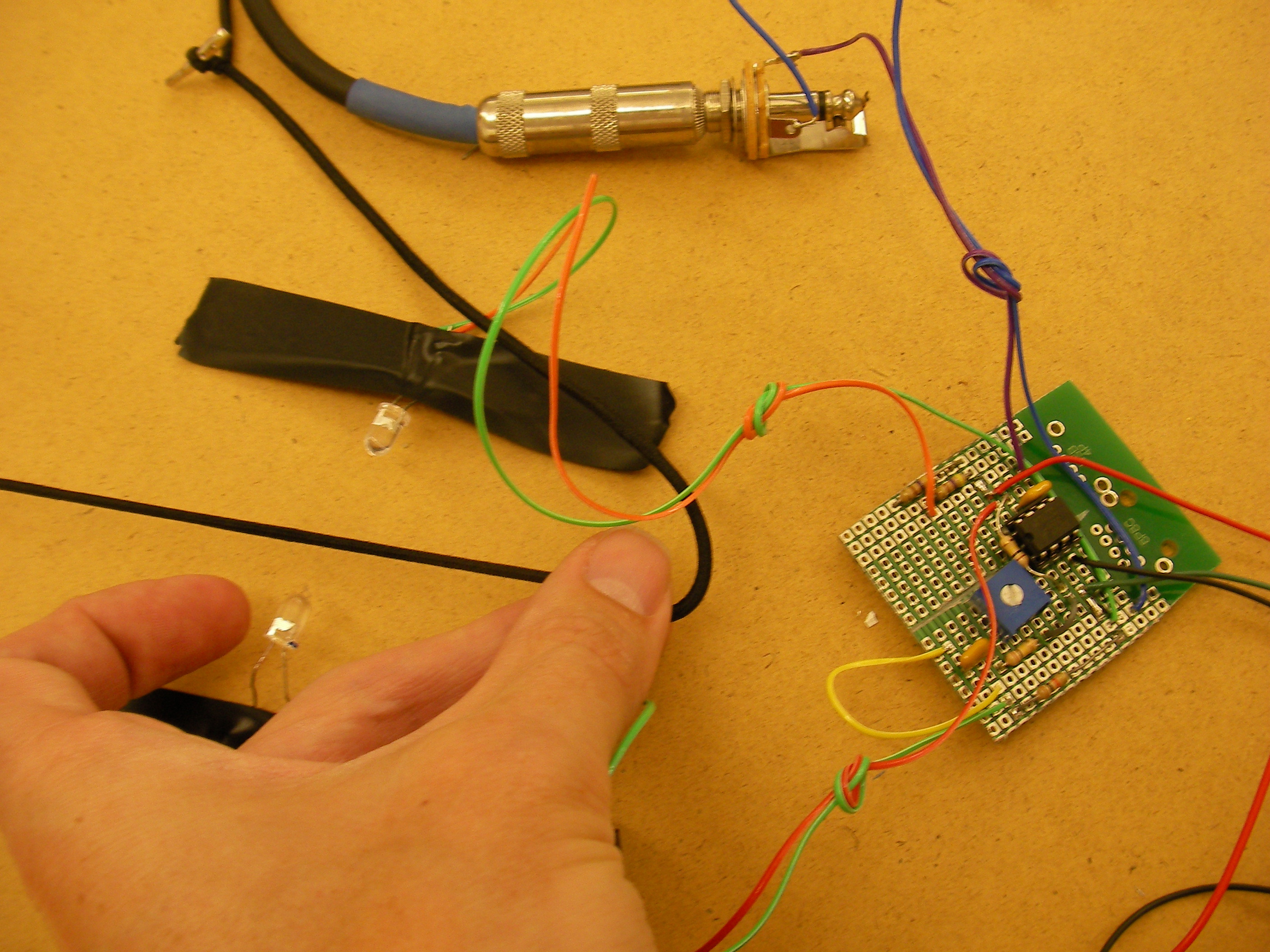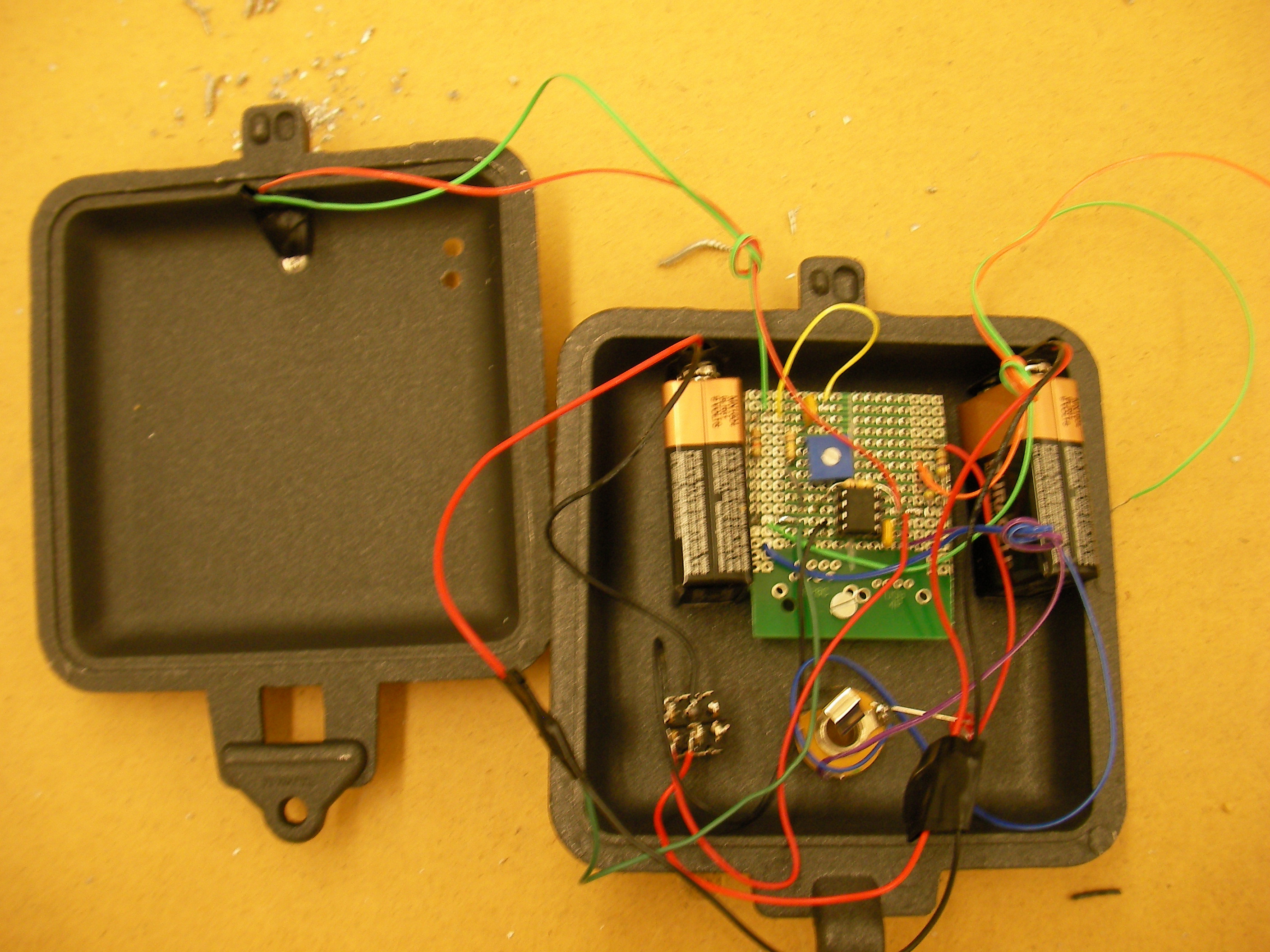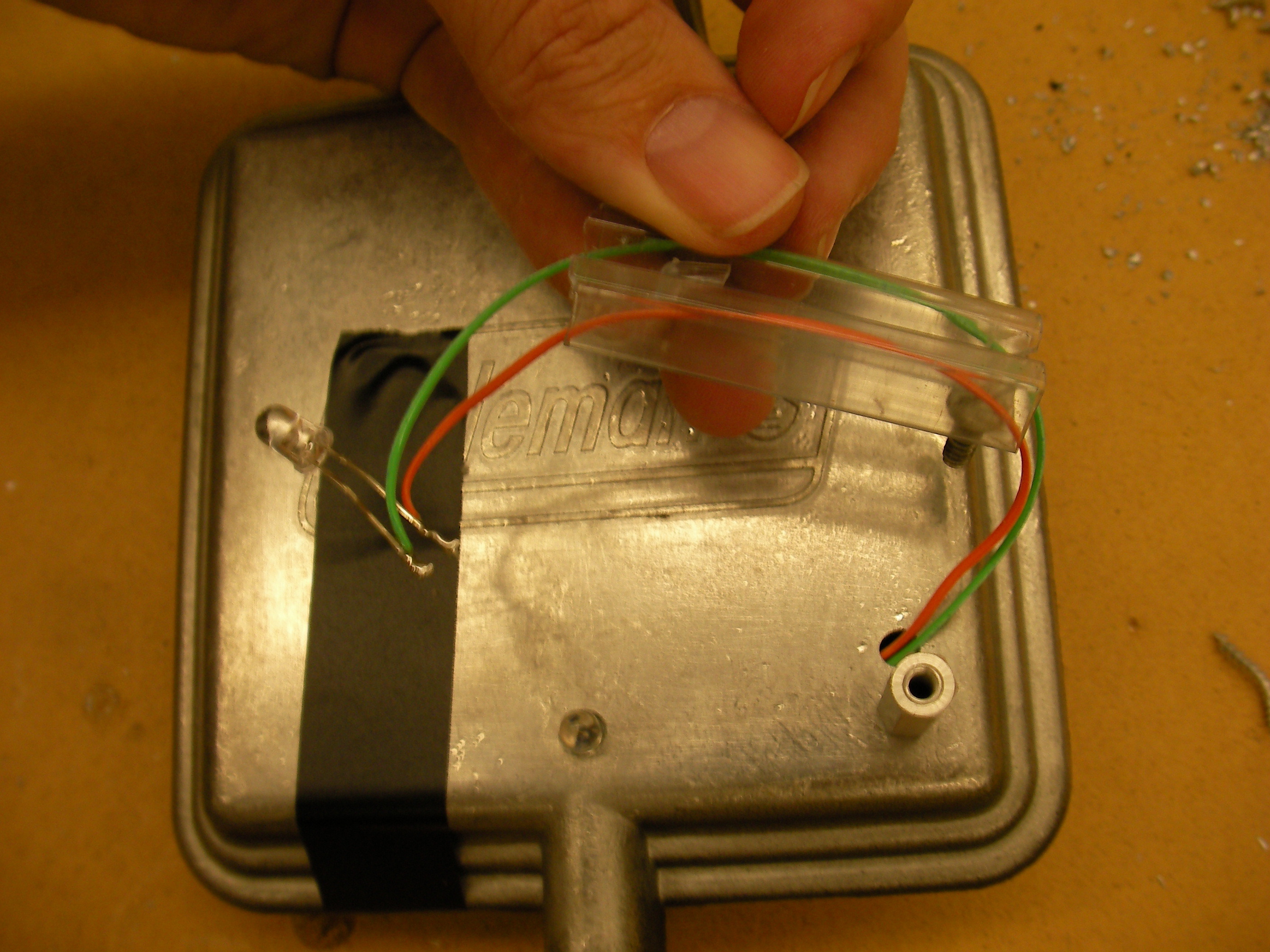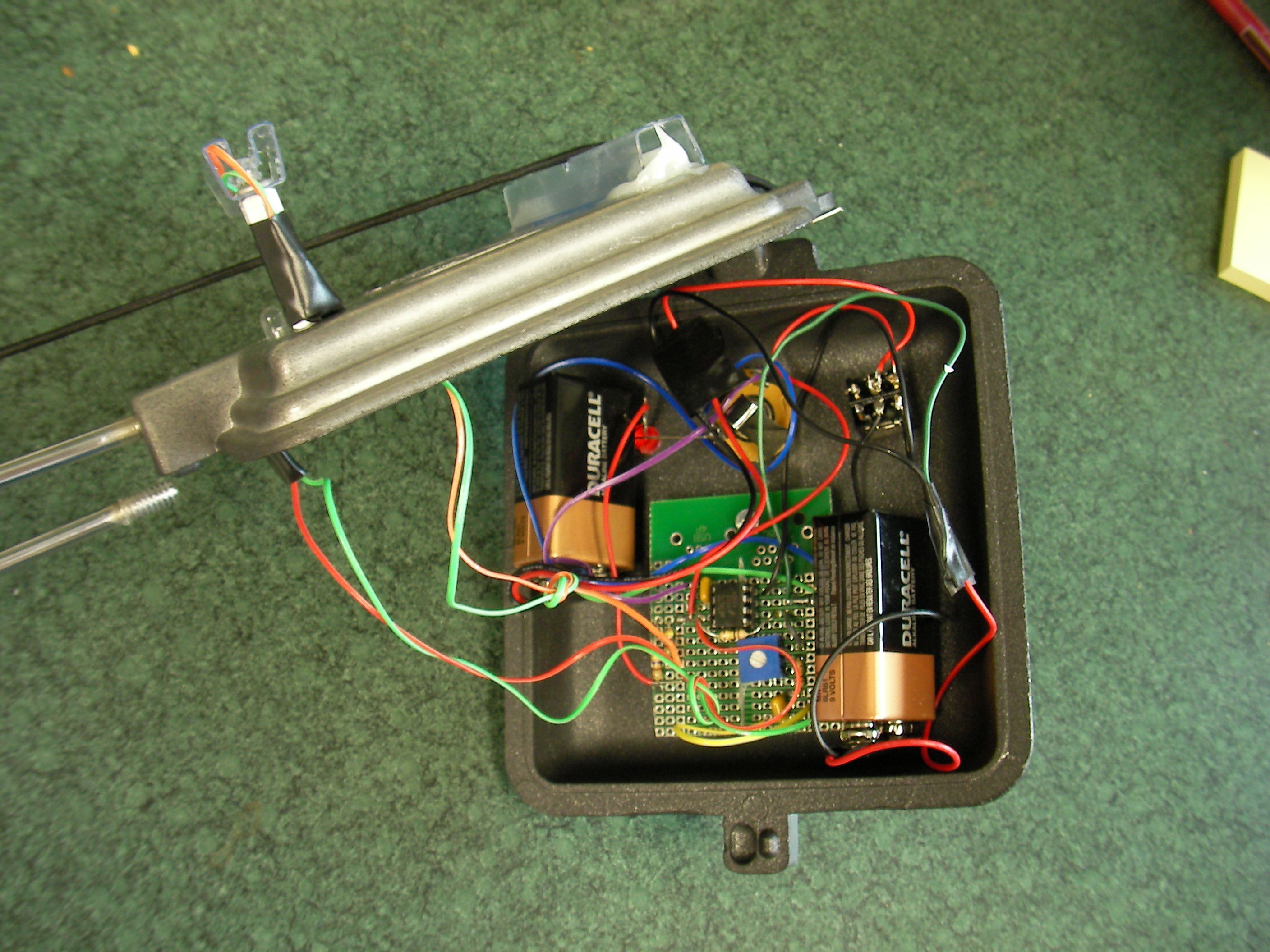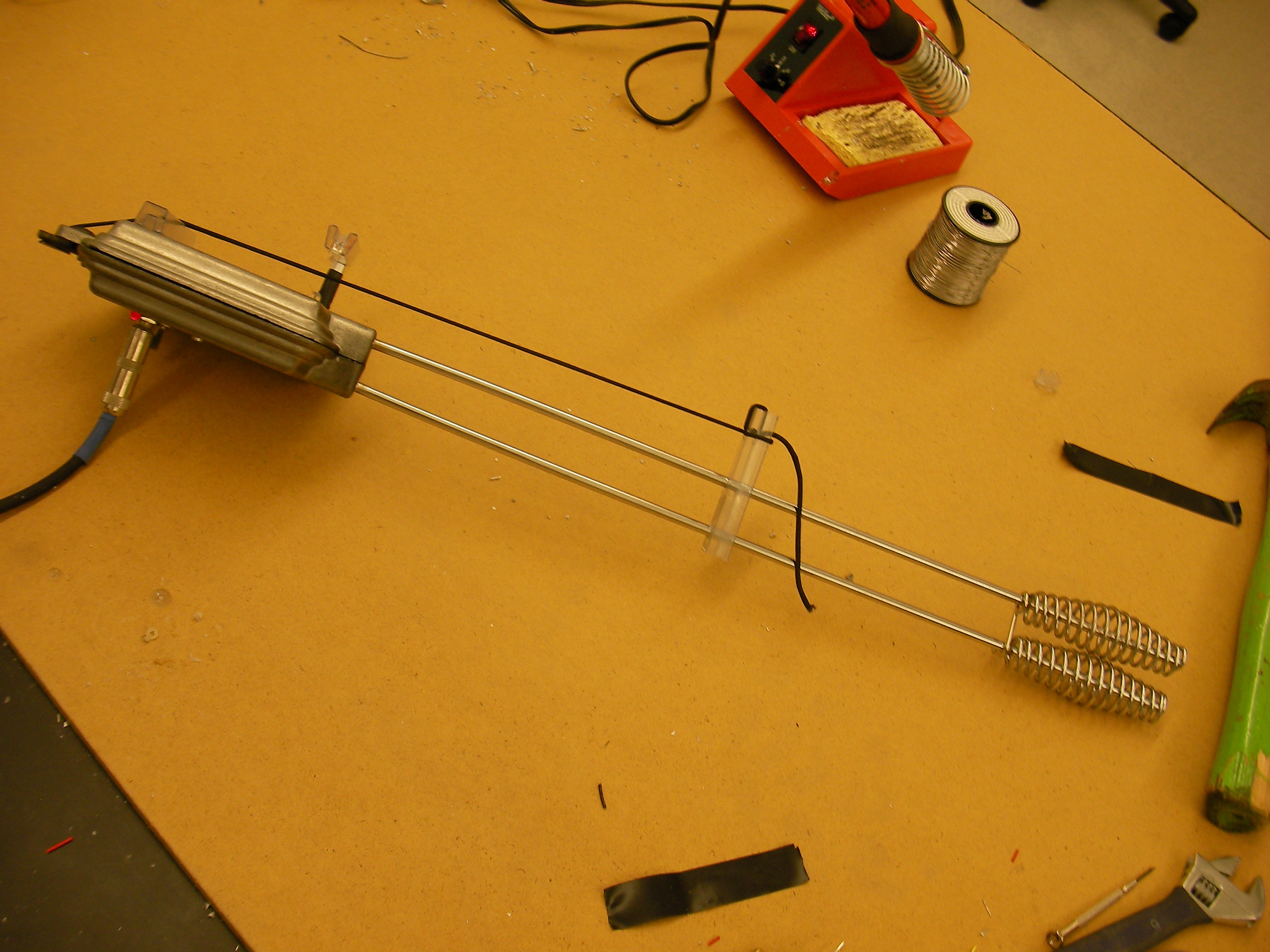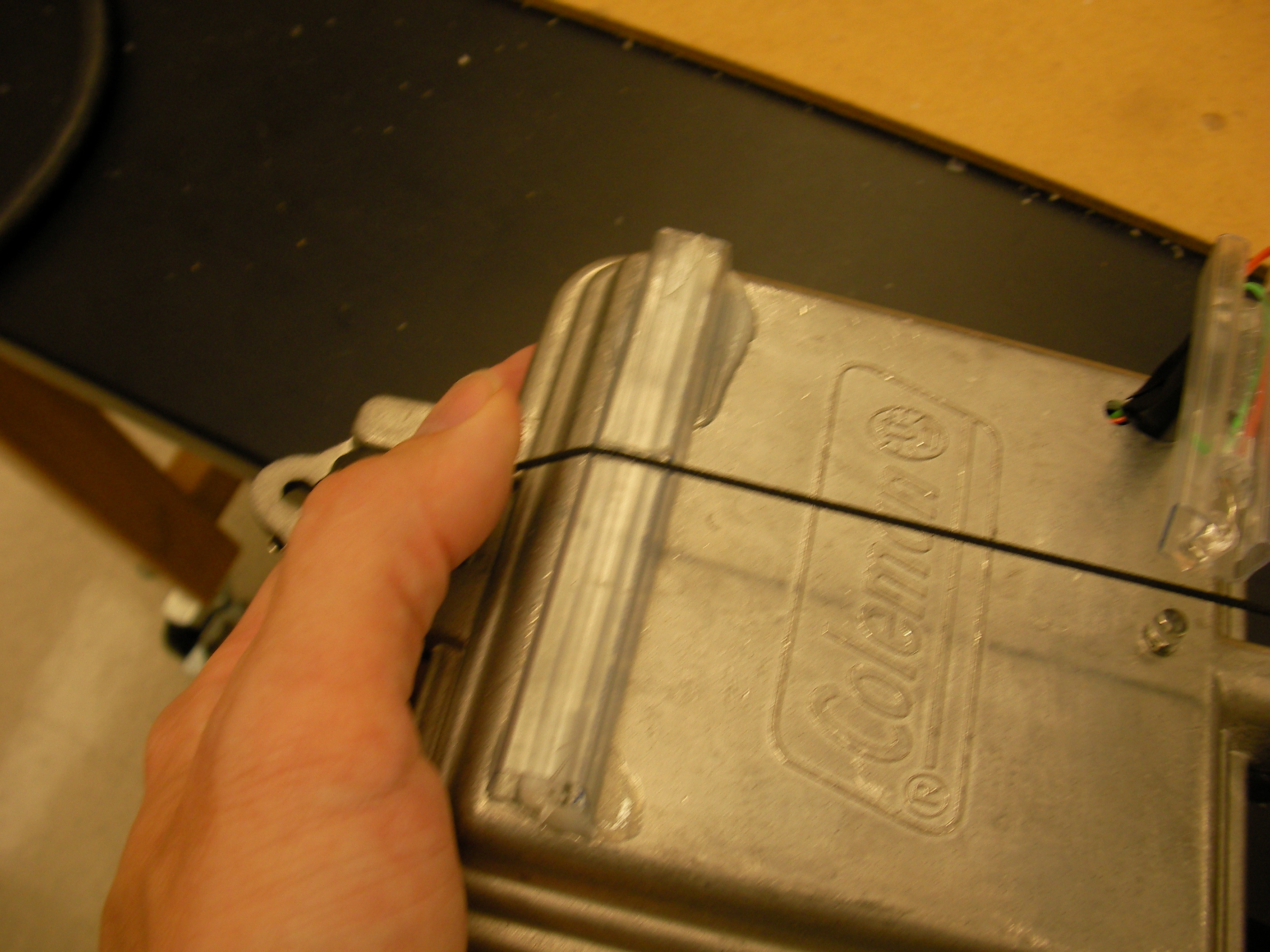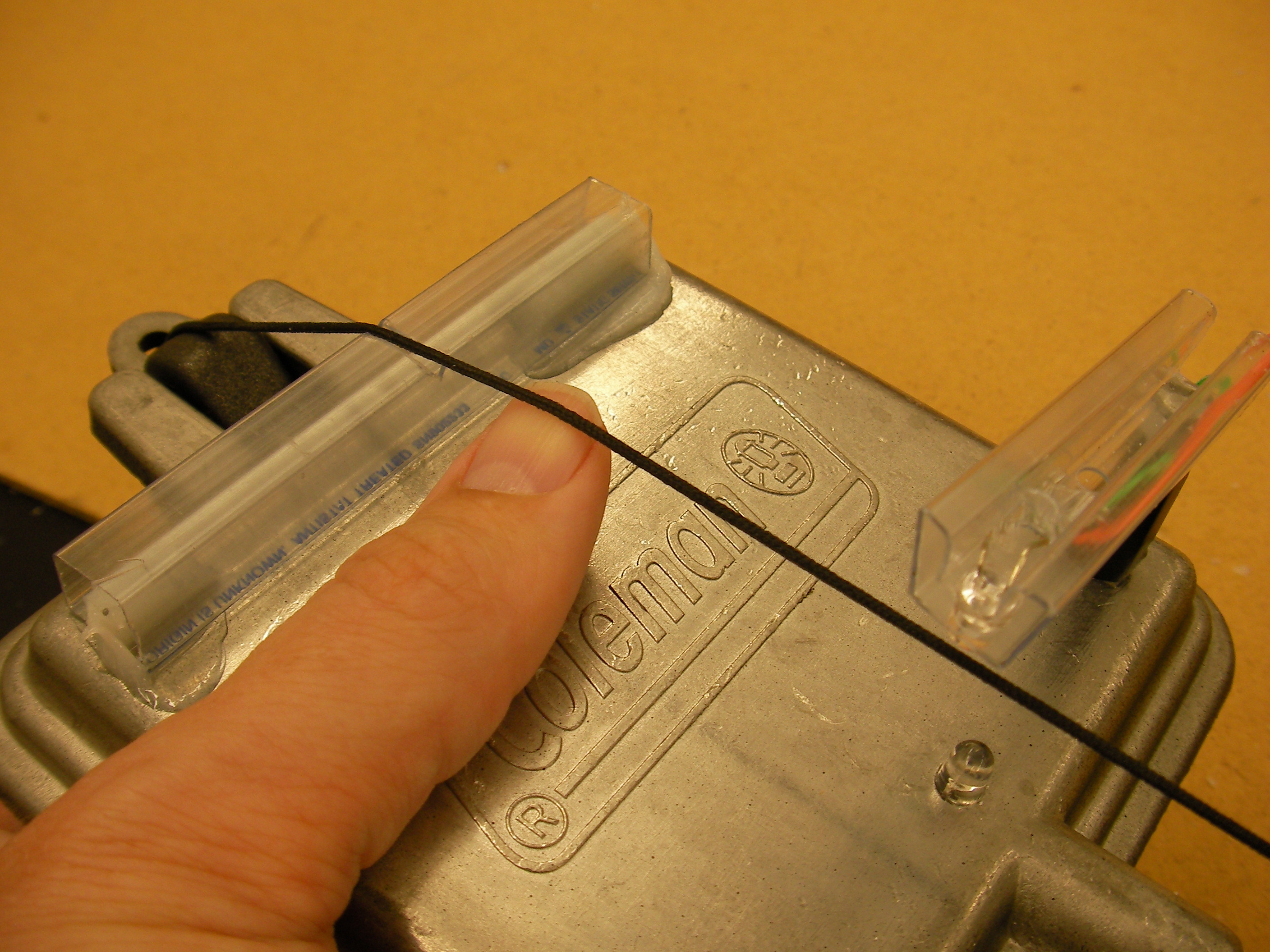Plug this rubber-band bass into a standard guitar or bass amplifier, and you can play amazingly low frequencies and cool sounds. Each rubber band sits between a paired infrared LED and receiver, and as it vibrates, it varies the amount of light detected. Each string’s signal is then amplified and mixed with the signals from other strings.
Rubber bands sound very different from steel or nylon strings. Their tone is rich in harmonics, and the high frequencies damp out fast. Rubber’s high elasticity also means you can generate unusually low notes out of short lengths of band. Because the amplifier requires both positive and negative voltages, I power the guitar using two 9V batteries, which are switched with a single dual-pole toggle. A red LED indicates when power is on. My original version had 4 elastic bands, one much longer than the rest. For simplicity, this article shows how to build a single-string version, which you can easily extend to accommodate multiple strings.


